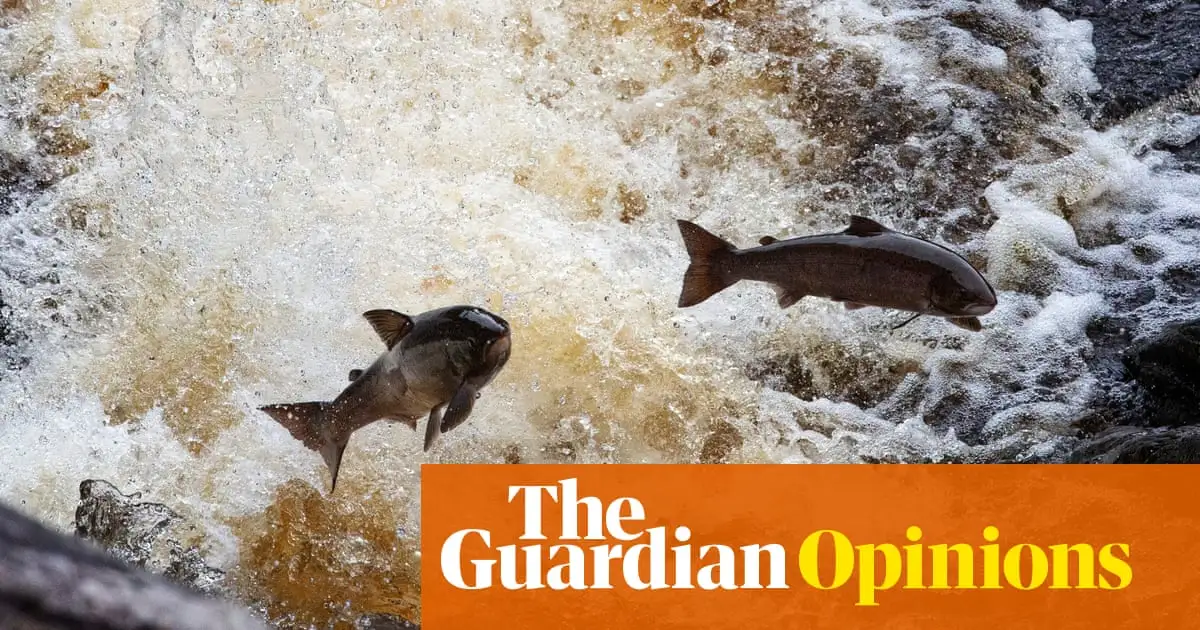The collapse in the number of wild salmon in England and Wales is deeply dismaying. These fish are widely regarded as wonders of the natural world because of their extraordinary life cycle. This takes them thousands of miles out into the North Atlantic Ocean, before they return to our rivers – swimming and leaping upstream – to spawn.
Climate change and failures of marine conservation have contributed to the decline in numbers across their entire range, which extends from Russia to Portugal. But in Britain, the poor state of rivers is another obstacle to the species’ survival. As well as a warning of the global threat to biodiversity, their dwindling numbers are a reminder of the price paid for the repeated breaking of environmental law.
Until 2017 at least 20,000 salmon were recorded every year in more than 40 rivers including the Tyne, Wear and Eden. From 6,952 in 2022, the total fell to an estimated 5,399 last year (anglers, who log each fish they catch, return them to the water afterwards). Other popular species have also experienced precipitous declines over this period. This summer’s butterfly numbers were the lowest recorded since the annual Big Butterfly Count began, while swallows have declined by about a quarter. In each case, a combination of agricultural methods and climate change is to blame. But the threat to salmon is important for what it reveals about the failed stewardship of rivers, and the way in which regulations designed to protect vital habitats are flouted as a matter of course.


